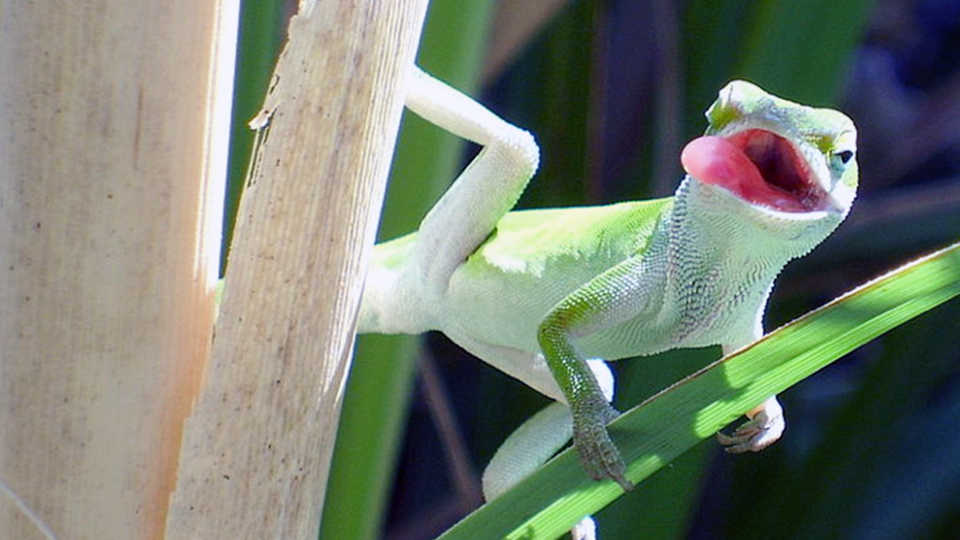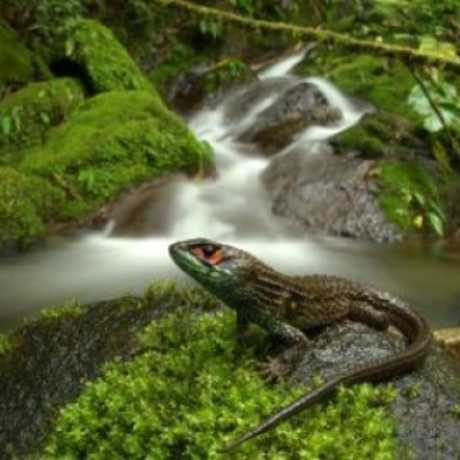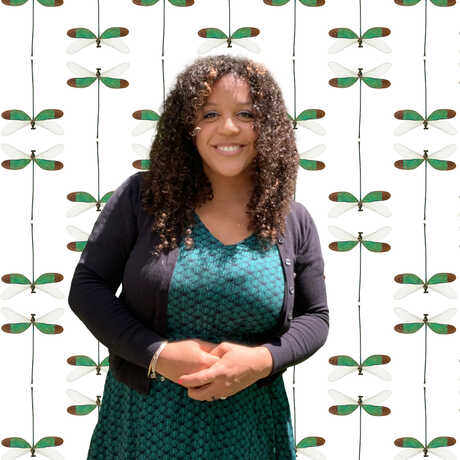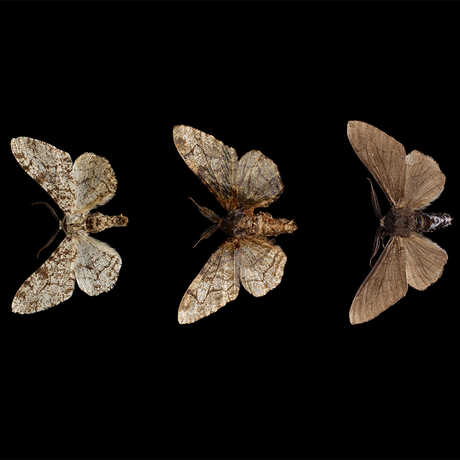Science News
ASAP Anole Adaptation

We’re taught that evolution happens over long periods of time and hundreds of generations, but what if competition pushes organisms to change more quickly, say just over 15 years and 20 generations?
That’s what a new paper in Science describes happening to the Carolina anole (Anolis carolinensis), a lizard that inhabits islands off the coast of Florida. In 15 years, these lizards’ toe pads have become larger, with more sticky scales on their feet. The study’s authors say these adaptations are a response to an invasive species, the brown anole (Anolis sagrei), that came from Cuba and arrived via agricultural shipments coming to South Florida in the 1950s.
The researchers speculate that the competition between brown and Carolina anoles for the same food and space may be driving the adaptations. In addition, the adults of both species eat the hatchlings of the other species, says lead author Yoel Stuart of the University of Texas. “So it may be that if you’re a hatchling, you need to move up into the trees quickly or you’ll get eaten,” he explains. “Maybe if you have bigger toe pads, you’ll do that better than if you don’t.”
The team hypothesizes that after contact with the invasive species, the native lizards began perching higher in trees, and, generation after generation, their feet evolved to become better at gripping the thinner, smoother branches found higher up.
“We did predict that we’d see a change, but the degree and quickness with which they evolved was surprising,” Stuart says of the physical changes.
This latest study is one of only a few well-documented examples of what evolutionary biologists call character displacement, in which similar species competing with each other evolve differences to take advantage of different ecological niches. A classic example comes from the finches studied by Charles Darwin. Two species of finch in the Galápagos Islands diverged in beak shape as they adapted to different food sources.
Survival of the tree climber, at least in anole lizards…
Image: IraEskins/Wikipedia




